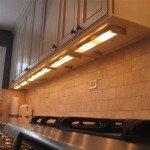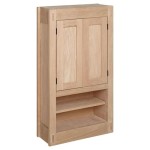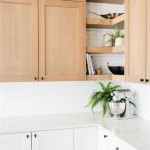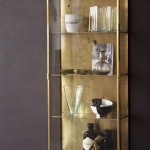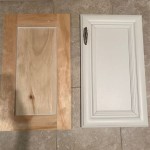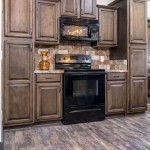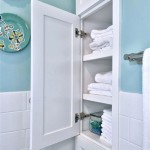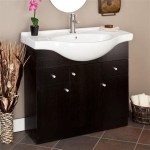A Modern Kitchen Design With Crystal Cabinet Workstation
The modern kitchen has evolved significantly, moving beyond simple functionality to become a focal point of the contemporary home. It’s a space where culinary artistry meets innovative design, reflecting both personal style and technological advancements. One particularly striking trend within modern kitchen design is the integration of crystal cabinet workstations, offering a unique blend of aesthetics and practicality. These workstations are not merely storage solutions; they are architectural elements that elevate the entire kitchen environment.
Crystal cabinet workstations represent a sophisticated approach, utilizing transparent or semi-transparent materials like glass or acrylic to construct cabinet doors and surfaces. This allows for the display of contents while maintaining a clean and organized appearance. The effect is a light, airy feel that contrasts with the often heavy and visually dense nature of traditional cabinetry. The integration of such a workstation requires meticulous planning and execution, considering factors such as lighting, material selection, and overall kitchen layout.
The popularity of crystal cabinet workstations stems from their ability to enhance visual appeal. By showcasing elegantly organized dishware, glassware, or even curated collections of cookware, they transform functional storage into a design feature. This design approach encourages careful curation and organization, as the contents are no longer hidden behind solid doors. The transparency also contributes to a feeling of spaciousness, particularly beneficial in smaller kitchen spaces.
Key Point 1: Aesthetics and Transparency in Design
The primary advantage of a crystal cabinet workstation lies in its aesthetic impact. The transparency of the materials used allows for an unobstructed view of the contents, creating a visually appealing display. This necessitates a curated and organized approach to storage, as the items within become part of the overall design. Designers often recommend coordinating colors and styles of dishware and cookware to create a cohesive and visually harmonious arrangement.
Lighting plays a crucial role in maximizing the aesthetic potential of crystal cabinets. Integrated lighting solutions, such as LED strips or spotlights, can be used to illuminate the interior of the cabinets, highlighting the displayed items and adding a touch of drama. This is particularly effective in the evening, creating a warm and inviting ambiance. The type of lighting chosen should complement the overall kitchen design and the materials used in the cabinets.
The choice of glass or acrylic significantly impacts the aesthetic. Clear glass offers the most transparent view, showcasing the items within with clarity. Frosted or textured glass provides a more subtle effect, obscuring the details while still allowing light to pass through. Acrylic is a durable and lightweight alternative to glass, offering similar visual properties with added resistance to breakage. The selection of the material should be based on the desired level of transparency, durability requirements, and budget considerations.
Furthermore, the framework surrounding the crystal panels contributes to the overall aesthetic. Sleek, minimalist frames in materials like stainless steel or aluminum complement the modern aesthetic, while wooden frames can add a touch of warmth and texture. The frame design should be consistent with the other hardware and fixtures in the kitchen, creating a unified and cohesive look.
The visual impact of crystal cabinets extends beyond the contents and lighting. The reflective properties of glass and acrylic can enhance the perception of space, making the kitchen feel larger and more open. This is particularly beneficial in smaller kitchens where maximizing natural light is essential. The transparency also allows for a better connection between the interior and exterior of the kitchen, bringing the outdoors in.
Key Point 2: Functionality and Ergonomics of the Workstation
Beyond the aesthetic appeal, the functionality of a crystal cabinet workstation is paramount. The design should prioritize ease of access, efficient storage, and ergonomic considerations. The internal configuration of the cabinets should be tailored to the specific needs of the user, incorporating features such as pull-out shelves, adjustable dividers, and specialized storage solutions for different types of items.
The height and depth of the cabinets should be carefully considered to ensure comfortable access. Upper cabinets should be positioned at a height that allows for easy reach without straining, while lower cabinets should be deep enough to accommodate larger items. Pull-out shelves can significantly improve accessibility, allowing users to easily reach items stored at the back of the cabinet.
Effective organization is crucial for maximizing the functionality of a crystal cabinet workstation. Dividers and organizers can be used to separate different types of items, preventing clutter and making it easier to find what you need. Specialized storage solutions, such as spice racks, utensil holders, and wine racks, can be integrated into the design to further enhance organization.
Ergonomics plays a vital role in kitchen design. The placement of the crystal cabinet workstation should be strategic, considering the flow of traffic and the proximity to other key areas, such as the sink, stove, and refrigerator. The workstation should be positioned to minimize unnecessary movement and maximize efficiency. The height of the countertop should be appropriate for the user, preventing strain and discomfort.
The integration of technology can further enhance the functionality of the workstation. Smart lighting systems can be programmed to adjust automatically based on the time of day or the user's preferences. Integrated charging stations can provide convenient access to power for electronic devices. Touch-activated lighting and opening mechanisms can add a touch of luxury and convenience.
Durability and ease of maintenance are also important considerations. Glass and acrylic surfaces should be resistant to scratches and stains, and easy to clean. The hardware and fittings should be of high quality, ensuring smooth operation and longevity. Regular cleaning and maintenance are essential for preserving the appearance and functionality of the workstation.
Key Point 3: Integration with Overall Kitchen Design
The successful integration of a crystal cabinet workstation requires careful consideration of the overall kitchen design. The style, materials, and colors of the workstation should complement the existing elements, creating a cohesive and harmonious space. The workstation should be viewed as an integral part of the kitchen, rather than a standalone feature.
The color palette should be carefully considered. Neutral colors, such as white, gray, and beige, provide a versatile backdrop that allows the crystal cabinets to stand out. Accent colors can be used to add pops of visual interest and create a sense of depth. The color scheme should be consistent throughout the kitchen, creating a unified and harmonious look.
The choice of materials should also be consistent. If the kitchen features stainless steel appliances, the crystal cabinet workstation should incorporate stainless steel accents. If the kitchen features wooden cabinetry, the workstation should incorporate wooden frames or detailing. The goal is to create a seamless transition between the different elements of the kitchen.
The layout of the kitchen should be carefully considered. The crystal cabinet workstation should be positioned in a location that maximizes its visual impact and functionality. It should be easily accessible from the main working areas of the kitchen and should not obstruct the flow of traffic. The size and shape of the workstation should be proportionate to the overall size of the kitchen.
The style of the crystal cabinet workstation should be consistent with the overall style of the kitchen. A modern kitchen may feature sleek, minimalist cabinets with clean lines and stainless steel accents. A traditional kitchen may feature more ornate cabinets with wooden frames and decorative hardware. The goal is to create a cohesive and harmonious look that reflects the overall style of the home.
The integration of technology should be seamless. Smart lighting systems, integrated charging stations, and touch-activated mechanisms should be incorporated into the design in a way that is both functional and aesthetically pleasing. The technology should enhance the overall experience of using the kitchen, rather than detract from it.
The surrounding elements, such as countertops, backsplashes, and flooring, should be carefully selected to complement the crystal cabinet workstation. The countertops should be durable, easy to clean, and visually appealing. The backsplash should protect the walls from splashes and stains, while also adding a touch of visual interest. The flooring should be durable, slip-resistant, and easy to maintain.
Finally, the overall atmosphere of the kitchen should be considered. The crystal cabinet workstation should contribute to a warm, inviting, and functional space. The goal is to create a kitchen that is both beautiful and practical, a place where people enjoy spending time cooking, eating, and socializing.

5 Modern Glass Cabinet Styles For A Chic Kitchen Housing News

Desk Archives Crystal Cabinets

Open Kitchen Design For Modern Homes Oppein

Luxury Modern Crystal Steel White Custom Kitchen Cabinets Melamine High Quality Design Made In China Com

Kitchens Glass Cabinets Over Desk Design Ideas

Glass Front Cabinets Transitional Kitchen Artisan Kitchens

Solid Wood Veneer Island Crystal High Light Luxury Rock Board Western Style Home Furniture Wooden Storage Modern American Flat Pack Hutch Kitchen Cabinets

Space Saving Kitchens With Versatile Cantilevered Workstation

Guide To Plan A 6 Ft Straight Kitchen Design

25 Top Kitchen Design Ideas That Will Inspire You Oppein
Related Posts

